Looking for a trip that’s designed for students? And it better be a Shanghai student tour with water town visit? Then this 6-day Shanghai Student Tour is a perfect choice for you. This tour will take you up close with the biggest metropolis in China, Shanghai. And with a day tour to the nearby city Hangzhou, a city reckoned as “the heaven on earth”. During your tour, you will not only visit the must-see attractions like the Bund, Oriental Pearl TV Tower, Yu Garden, West Lake, but also get into Shanghai Museum to learn the culture of Shanghai, and to Zhujiajiao Ancient Water Town to see the tranquil side of the city. Besides, you will visit a market called Tianzifang and see how the locals are going to spend their day at leisure. Contact us for more details! We are looking forward to seeing you on this Shanghai student tour with Hangzhou!

Welcome to Shanghai. It is one of the most modernized cities around the world with a population of almost 24.87 million, covering an area of nearly 1,237.85 square kilometers. Our Shanghai student tour includes a 6-day routine for your trip and you could enjoy it to the fullest. After arrival, you could find our guide waiting for you at the airport, then you will be transferred to your hotel and have a rest.
Your student tour officially begins! And today you will visit four sites, Shanghai Museum, Yu Garden, the Bund, and Nanjing Road.
After a night-long rest, you will be led to Shanghai Museum (closed each Monday). There are almost 1 million collections in Shanghai Museum classified by several sorts, like ancient bronze, sculpture, ceramics, calligraphy, and others. At the bronze exhibition room, you can appreciate numerous intricate bronzes manufactured by ancient Chinese people. For instance, De Tripod and Mao Tripod were both masterpieces made in the Western Zhou Dynasty (1046BC-771BC), and the latter was used to commemorate the owner, who was a general and was promoted for his feats. This room also displays a variety of fascinating old currencies of different times. You will definitely have a better understanding about Chinese history.
Then we will take you to Yu Garden (closed each Monday). As of today, it has a history of more than 400 years, and it was designed by Ming Dynasty’s (1369-1644) landscape architect Zhang Nanyang. The garden’s master, Pan Yunduan, began building it from the year of 1559 around his original house, and spent 20 years to finish the project. The owner hoped that his families could live in this garden in peace. Therefore, he named this garden Yu Garden, in which “Yu” means peace in Chinese. Walking inside the garden, you can catch sight of beautiful rockery, charming architecture and lakes, through which you can get a feeling of stepping into ancient times. After the visit, our guide will lead you to a local restaurant to have a respite and real Chinese food.
In the afternoon, the Bund is a nice place for you to experience the prosperity of Shanghai. You will find 52 buildings with unique architectural styles from a variety of countries, and this building group is known as Exotic Building Clusters in the Bund of Shanghai. Right here, you could see the Asia Building with Baroco style, Dongfeng Hotel with a mixture of British and Japanese style and so on.
Then, walking on Nanjing Road, the bustling stores and tasty snacks on the road will definitely impress you. Shen Dacheng, one of the time-honored brands, could serve you a series of local food like osmanthus cake, small soup dumplings. And the famous Yangtze Hotel, where the wedding of Chiang Kai-shek (former leader of Chinese Nationalist Party) and Song May-ling (famous politician and diplomat) was held, is located on this road. It will take about 30 minutes to only walk through the road, and we believe you will be delighted during this process.
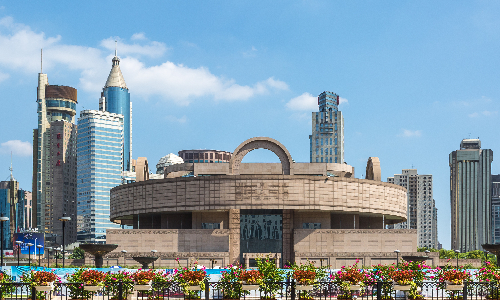
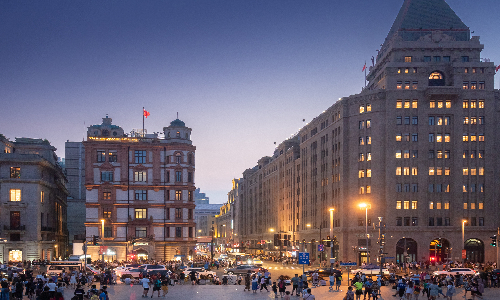
This morning we will first go to Jade Buddha Temple, one of the remarkable religious buildings in Shanghai. Though standing in the center area of Shanghai city, it can let you feel a kind of tranquility and peace. The Jade Buddha Temple was once destroyed by fire during the chaos of the Revolution of 1911 and then it took about 10 years to reconstruct this temple. After its reopening, Jade Buddha Temple did a lot of work in the external reception, and became an important window for Shanghai’s friendly exchanges with foreign countries. According to statistics, during the first 10 years of its reopening, the Jade Buddha Temple received more than 6.3 million visitors, including more than 0.8 million foreign visitors. Almost all the foreign visitors to Shanghai will visit the Jade Buddha Temple, including some government dignitaries and famous figures from all walks of life, such as the wife of former US President Ronald Reagan, the wife of Brazilian President, and Princess Margaret of Britain. On January 8, 1963, Premier Zhou Enlai accompanied the wife of Sri Lankan Prime Minister Bandaranaike to the Jade Buddha Temple to attend a ceremony to commemorate the 64th anniversary of the birth of her husband. Walking into the temple, you will find many halls with numerous Buddhist collections. The one that you cannot miss is the Jade Buddha Hall, which enshrines a 1.95-meter tall seated jade Buddha. This jade Buddha was carved from a single piece of jade, which is pretty rare. Other than this hall, there’s another one that is worth a visit-the Grand Hall. It is also called Da Xiong Baodian in Chinese, in which Da means that it is big and inclusive, Xiong means to suppress evil spirits, and Baodian means a hall that enshrines Buddha statues. In this hall, you can see three giant Buddha statues sitting on lotus with peaceful looks.
After lunch and a good rest, we will drive to the west for Zhujiajiao Ancient Water Town, and this 54-kilometer route will take around 80 minutes. This town, covering an area of 47 square kilometers, boasts numourous tourist sites. For instance, Taian (means peace and safety in Chinese) Bridge is the symbolization of peace and safety, thus it is said that people who have stood on it can be safe in the next year. And the Fangsheng Bridge is the biggest bridge with five holes in the lower reaches of the Yangtze River. Different from others, this bridge has a mild arch and very thin steps which can reach as thin as 3 centimeters and no more than 8 centimeters. You can also visit the Zhuxi Garden, a small and exquisite garden, and it is now open for free. The Humanities and Arts Museum, a modern white building with unique shape, which records the local history and culture of Zhujiajiao in the form of oil paintings and sculptures. Then walking through the north street, you will see lots of unique bridges and local stores. This water town is so fascinating that some people called it “Oriental Venice”. Sanmao, a famous late writer in Taiwan, was infatuated with the scene of “small bridges, running water and old houses”. Absolutely, she was intoxicated with the romantic feelings of poetry that only belongs to this small town. After you are satisfied with the beautiful scenery and delicate food, we will take you back to your hotel to have a nice rest.
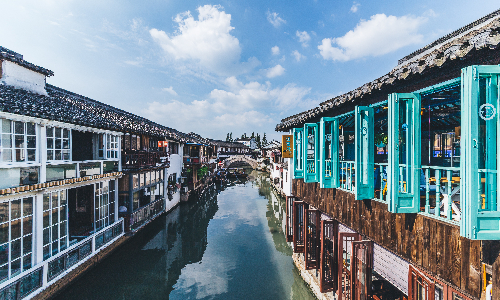
 Hangzhou
Hangzhou Shanghai
Shanghai Today we will drive west to Hangzhou after breakfast, and this 177-kilometer route will take about 3 hours. After arrival, first we will go to the West Lake. There are more than 600 giant trees with a history of over 100 years around the West Lake. You can take a boat on the lake, and you will see the beautiful reflections of flying birds, the sky, and trees along the bank. The West Lake includes almost 100 sights, and here are some most famous ones, such as Dawn on the Su Causeway in Spring and Remnant Snow on the Bridge in Winter. These sights attracted lots of artists and poets during the Song Dynasty (690-1279) to take as materials for their masterpieces. Hope you can have good time here.
After touring the West Lake, we will go to Lingyin Temple, a Buddhist architecture in China. Basically, it incorporates Heavenly King Hall, Great Hero Hall, Pharmacist Hall, Dharma Hall and Huayan Hall, Jigong Hall and so on. Among them, the Jigong Hall is the most popular because of the fictional figure-Jigong. Jigong is a fictional Buddhist figure. He is a little insane in his everyday behaviors but he is with extraordinary powers. There’s an interesting story about Jigong and the Feilai Peak in Lingyin Temple and it goes like this. Once, Jigong predicted that there would be a huge mountain flying toward the front side of Lingyin Temple, where a small village stood. That would be a disaster for everyone living there. Jigong tried to warn the villagers about it, but no one believed him due to his previous peculiar behaviors. At the critical moment, he took a bride away from a wedding ceremony and dashed out the village. As a result, all the residents in the village ran after him for the bride. And later, the villagers realized that they were saved by Jigong when the mountain crashed into their village. This mountain was then called Feilai Peak, which means it flew from a distance in Chinese.
After lunch and some rest, you will be led to the Six Harmonies Pagoda (also called Liu He Pagoda). This tower was built in the Song Dynasty (960-1127) to alleviate the tidewater of the Qiantang River (the river besides the pagoda) and to commemorate a person called Liu He. It is said that once there was an evil dragon living in this river, and it did some bad things like flooding farmlands and overturning fishing boats. Then, the son of a fisherman called Liu He, finally suppressed this evil spirit. This pogoda possesses a total of 13 floors, and is about 60 meters in height. The waist part of pagoda is carved with several kinds of patterns, including pomegranate, lotus, camellia, magnolia, phoenix, peacock, parrot and so on. Ascending the pagoda, you will have a nice view of the Qiantang River, and this makes it a hot spot for visitors who want to watch the Qiantang River tide in Autumn. After spending some time here, we will drive you back to your hotel.

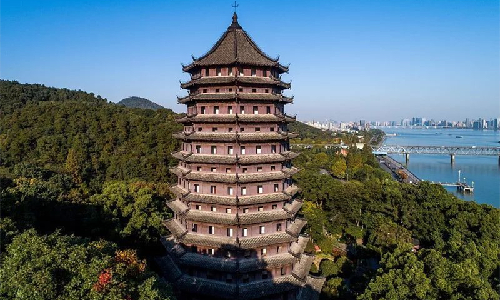
Today we will first visit the Shanghai Oriental Pearl TV Tower, a 468-meter-high tower. It shows the typical Shanghai architectural feature, which combines the elements of modern techniques and oriental culture. Your guide will take you to the observation deck of the tower to have a panoramic view of the city. Imagine that the elevator smoothly lifts you to the 263-meter-high place in 40 seconds, and the streets as well as people gradually zoom out. What a nice feeling! This tower owns the highest revolving restaurant in Shanghai, where you can enjoy spectacular view while enjoying palatable foods. This is not where we will have lunch, but if you would like to switch the local restaurant lunch to this revolving restaurant buffet lunch, just let us know. What’s also amazing about this tower is that the light system of it can present more than 1,000 kinds of combinations. On March 8th and April 2nd of each year, the Oriental Pearl TV Tower will emit pink and blue lights, respectively, to draw public attention on caring for women and autism sufferers. In addition, Oriental Pearl TV Tower also works as a significant window for Shanghai’s external publicity. During the first ten years since its establishment, it received 195 foreign leaders and held nearly 100 important world-class conferences as well as more than 300 great activities.
Next, we will go to Tianzifang Market. Tianzifang is a fashionable neighborhood transformed from old Shanghai warehouses, alleyways, etc. There are all kinds of artistic stores, galleries, workshops, cafes and restaurants. If you like photography, this is absolutely one of the best places to go in Shanghai. It will make a nice post on your social media. A kind reminder, some of the stores don’t allow visitors to take photos, so you’d better ask the owner before doing so. What’s interesting about this place is that the stores, cafes, etc. are all on the first floor, and there are still local citizens living on the above floors. You can tell that from the drying racks hanging there, and the food delivery guys running around the narrow alleyways. It is very similar to Nanluoguxiang in Beijing, except that the alleys are narrower. And if you are looking for somewhere to get some nice gifts for your family and friends, this is also the place to go. You will find silk products, old Shanghai cosmetics, T-shirts with “I heart Shanghai”…
In the afternoon, we will drive about 50 minutes, 22 kilometers toward the west to Qibao Ancient Town which boasts a long history and beautiful scenery. In some way, this small town reflects the thousands of years of Shanghai’s history. It is not a very big town, and its main attractions include Qibao Old Street, Qibao Pawn Shop, Zhou's Microcarving Museum, Cricket Cottage and so on. Its name Qibao means seven treasures in Chinese. Because according to legend, there are seven ancient treasures in this town, respectively the lotus sutra, the sacret tree, the blanching bell, the flying buddha, the golden chicken, the jade chopsticks and the jade axe. You will not find these seven treasures now, but you will definitely find seven types of food treasures. Qibao Ancient Town is also a known as a gourmet town, and the town is full of famous local snacks, such as Qibao square cake, Qibao mutton, wine stuffed dried meat, etc.
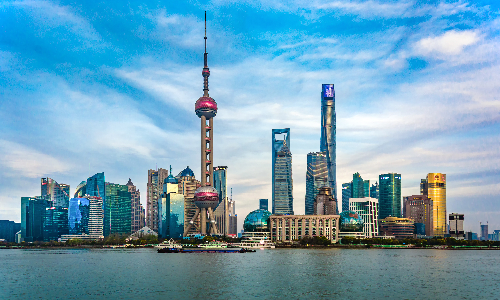
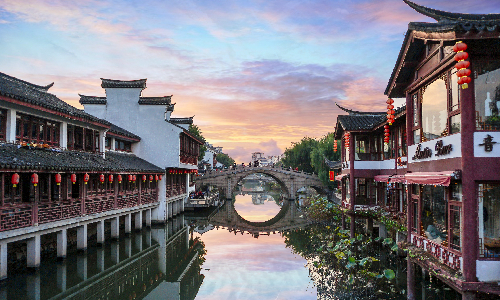
Your student tour will come to an end today. You will be transferred to the airport for your flight home and your guide will help you check-in. Have a pleasant journey!
Author: Guo Xin
Proofreader: Li Yiwen
| City | Five Star hotel list | Four Star hotel list |
|---|---|---|
| Shanghai | Ocean Hotel Shanghai | Courtyard by Marriott Shanghai Central |
 |
![]() About your child or infant, please contact us for a discounted price.
About your child or infant, please contact us for a discounted price.



We started with a few days in Beijing & ended in Shanghai, from where we visited the Forbidden City and Great Wall. In between we visited Terra Cotta Warriors Museum, Panda Base, Shanghai Disneyland.

We had a wonderful holiday in China which will remain long in the memory. China is a breathtakingly beautiful country full of splendid temples and palaces, mountains and rivers, peaceful rural scenes and bustling shopping streets.
 QUICK ENQUIRY
QUICK ENQUIRY